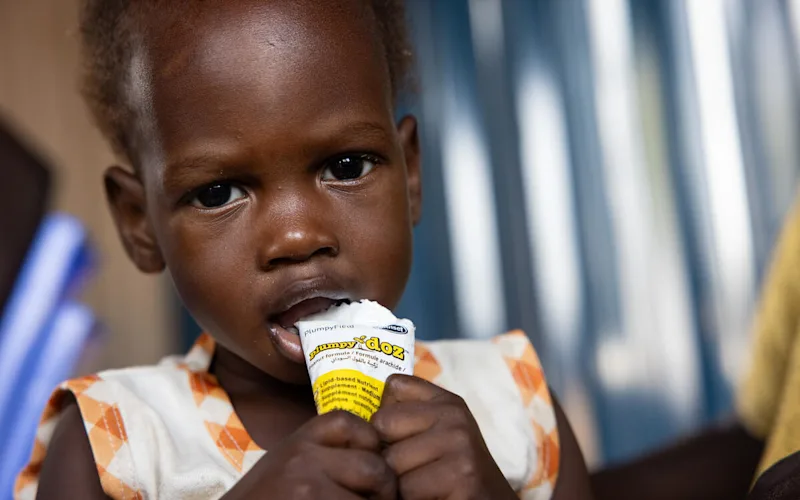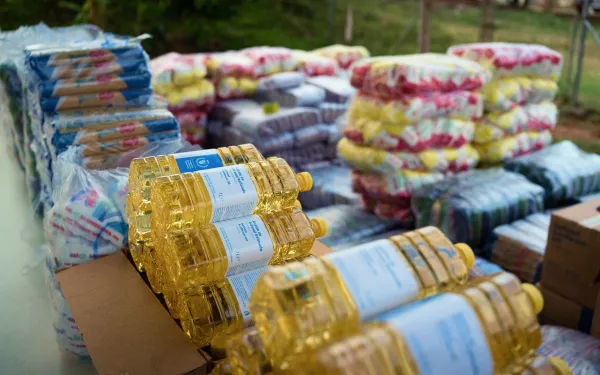

What’s inside a typical WFP food basket
Rice or flour
A staple item in many countries and vital source of daily energy.
Vegetable oil
Rich in essential fats and vitamins, supporting a healthy immune system.
Lentils or beans
Plant-based protein and fibre, helping maintain a healthy heart and gut.
Salt
Supports a healthy pregnancy and helps child development.
The food basket is based on local food preferences and diets wherever possible so the items could vary.
Severe flooding has affected more than 311,000 people. Hunger and malnutrition, particularly among women and children, are increasing rapidly.
Overview
Shared meals will provide emergency food assistance, nutrition support, school meals and aid to farming communities in South Sudan.
As the world’s youngest nation, South Sudan is experiencing a humanitarian crisis driven by conflict, climate shocks, economic instability, and the ongoing war in neighbouring Sudan. Millions of people fleeing the Sudanese conflict have sought refuge in the country, putting immense strain on already vulnerable communities. As a result, more than half of South Sudan’s population – 7.7 million people – need food immediately. The situation is particularly devastating for children, with over 2.3 million at risk of malnutrition. Urgent food assistance is critical to support and sustain people in need. The World Food Programme (WFP) is supporting people by providing emergency food, cash assistance, and nutrition support for pregnant women, breastfeeding mothers and children. School meal programs aim to keep children — especially girls — in school, and livelihood programs have supported communal farming initiatives. WFP’s life-saving assistance is helping vulnerable communities now, so they can have a future to look forward to.
Location
South Sudan